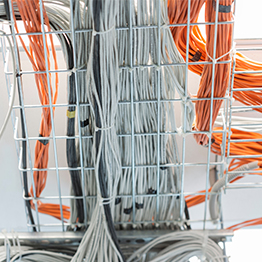
Cables are essential components in electrical systems, providing the path for electrical currents to travel between devices, outlets, and circuits. Whether you’re installing wiring at home, setting up industrial equipment, or working in telecommunications, understanding the key terms related to cables can help you make informed decisions. This article will explore important terms like grounding, amps, voltage, watts, and other related concepts that are crucial in the world of cables.
Grounding
Grounding refers to the process of connecting an electrical system to the earth to ensure safety. The ground connection provides a safe pathway for electricity to flow in case of a fault, preventing dangerous electrical surges that could harm people or damage equipment. Proper grounding is essential for safety in both residential and industrial applications. Grounding helps protect against electrical shocks and reduces the risk of fire caused by faulty wiring.
Amps (Amperes)
Amps, or amperes, measure the flow of electric current in a circuit. One ampere represents the amount of electricity that flows through a conductor when one volt of electrical pressure is applied. In the context of cables, the amp rating is important because it tells you how much current a cable can safely carry without overheating or causing damage. When selecting cables, it’s crucial to choose one with an ampacity (amp rating) that matches or exceeds the current requirements of the system.
For instance, a 12-gauge wire might be rated for 20 amps, while a 10-gauge wire could handle 30 amps. Using a wire with a higher ampacity ensures safety and efficiency in the system.
Voltage
Voltage is the electrical potential difference between two points in a circuit. Measured in volts (V), voltage is the force that pushes electrical current through a conductor, such as a wire. Voltage determines the power supplied to electrical devices, and cables are rated based on the maximum voltage they can handle.
Common voltage ratings for cables include 300V, 600V, and 1000V, depending on the application. For example, residential wiring typically uses cables rated for 600 volts, while industrial cables may be rated for 1000 volts or more.
Watts
Watts are a measure of electrical power. Power is calculated by multiplying the voltage and the current (amps) in a circuit:
Watts = Volts x Amps
For example, a 120-volt circuit carrying 10 amps of current will provide 1200 watts of power. Watts are important when choosing the correct cable for power-hungry devices. If the device requires a high wattage, it may need a larger gauge wire to ensure proper power delivery and to prevent overheating.
Resistance
Resistance is the opposition that a material offers to the flow of electric current. It is measured in ohms (Ω) and depends on factors such as the material of the wire, its length, and its cross-sectional area. Higher resistance can lead to power losses and heating in the cable, which is why selecting cables with lower resistance is important, especially for long-distance power transmission.
Conductor and Insulation
Cables consist of two primary parts: the conductor and the insulation. The conductor is typically made of copper or aluminum and is responsible for carrying the electrical current. The insulation surrounds the conductor and provides protection from electrical shock, as well as preventing short circuits. Insulation materials vary and are rated based on factors such as heat resistance and environmental conditions. Common materials include PVC, XLPE, and Teflon.
Cable Jacket and Sheath
The cable jacket or sheath is the outer layer of the cable that provides protection against physical damage, moisture, and other environmental factors. It is designed to protect the internal conductors and insulation from mechanical damage, UV rays, and chemical exposure. Different types of jackets are used for specific environments, such as outdoor-rated jackets for cables exposed to sunlight or abrasion-resistant sheaths for cables used in harsh industrial environments.
Summary
Understanding the key terms related to cables—such as grounding, amps, voltage, watts, resistance, and the components of the cable—can greatly enhance your ability to make the right choices for your electrical needs. Whether you’re working on a simple home installation or an industrial electrical system, knowing the specifications of the cables you choose ensures both safety and efficiency. Always consider the cable’s ampacity, voltage rating, and resistance to ensure proper functionality and safety for your electrical systems.

